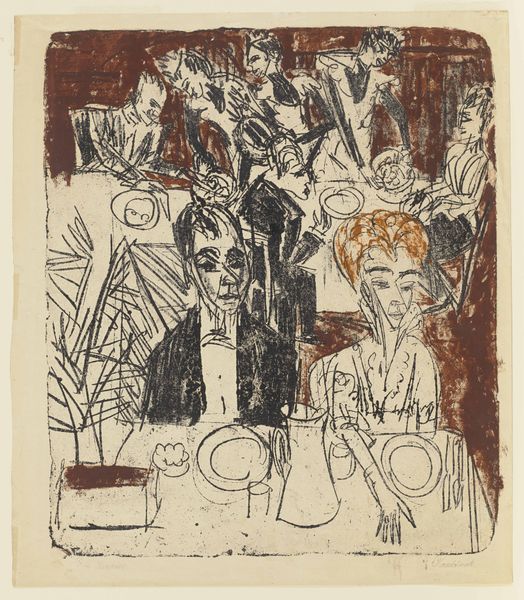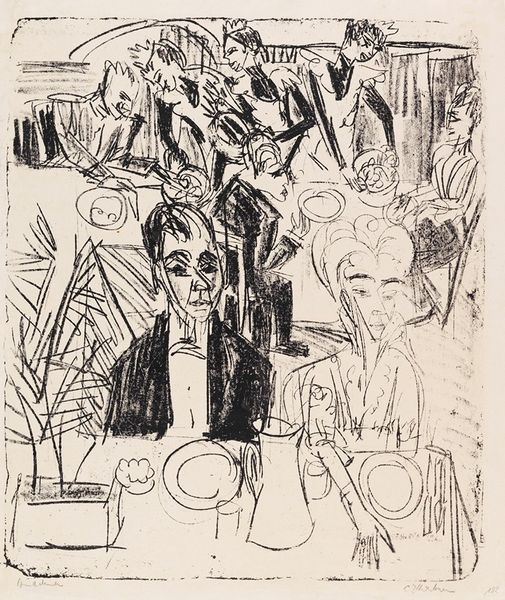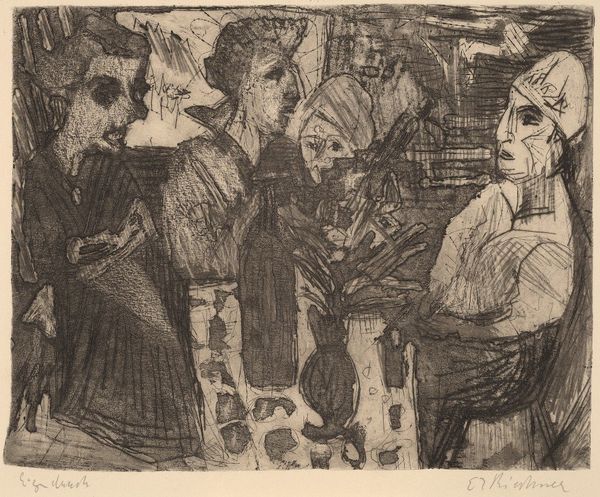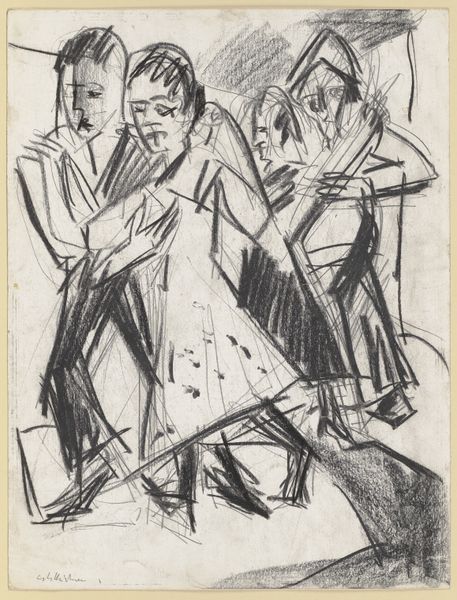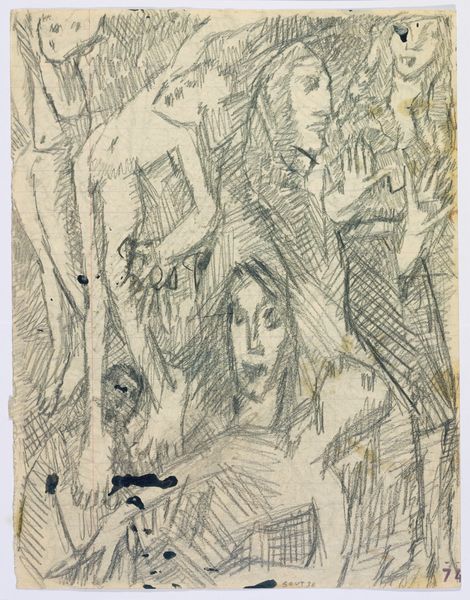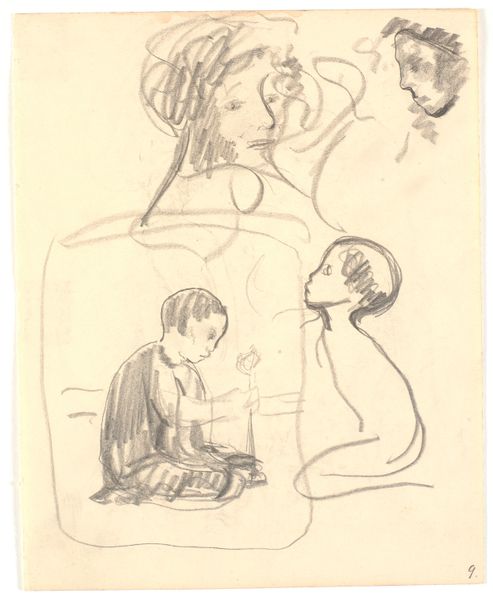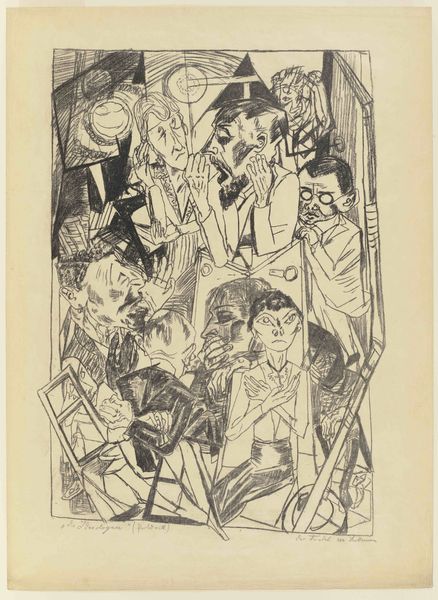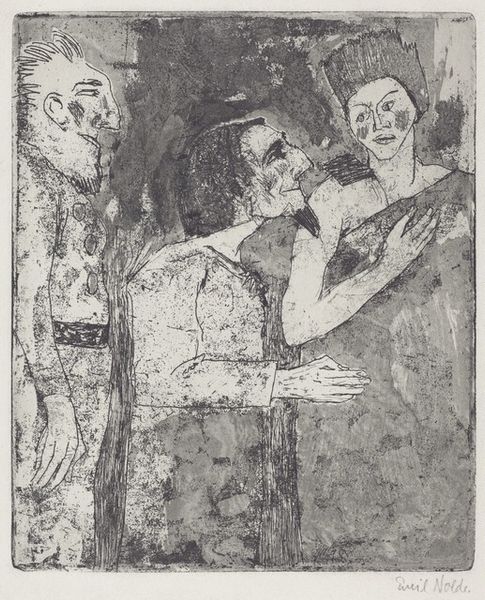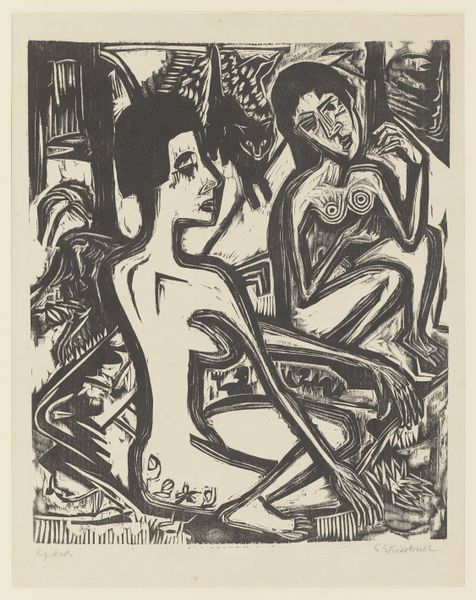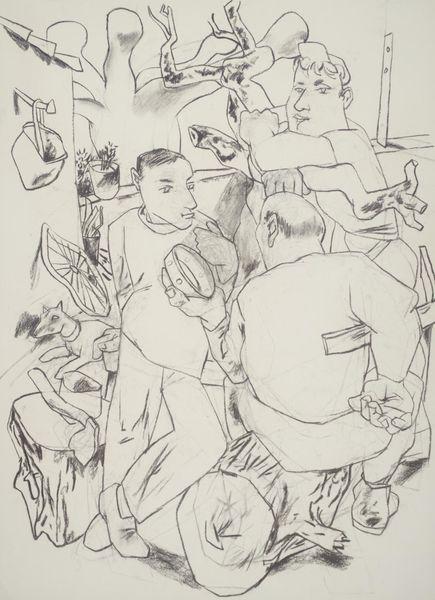
drawing, ink
#
drawing
#
ink drawing
#
pen sketch
#
figuration
#
abstract
#
ink
#
expressionism
#
watercolour illustration
#
genre-painting
Copyright: Public Domain: Artvee
Curator: This drawing, made with ink on paper, is titled "At the Table" by Ernst Ludwig Kirchner and was completed in 1916. Editor: It feels…hollow. Like looking at a party through a dirty window, the joy’s smudged. You know? Everyone is at the same table, but detached from one another. Curator: The choice of ink drawing contributes significantly to this effect. Look at the lines: nervous, quick. There is a lack of clear boundary between figures and ground, which speaks to the social unease present in Germany at that time, burdened by WWI. Editor: Absolutely. And look how the table edge kind of just dissolves. Even their gathering isn't substantial, permanent. Is this supposed to be dinner, or a seance gone wrong? It’s the artist, in that expressive Expressionist way, hinting at fragility of life. A hard life I wouldn’t like to find myself into. Curator: The economic situation in Germany must be also taken into consideration, along with access to certain supplies and resources, determining artistic expression: Kirchner wasn't necessarily going for "pretty". He likely worked with affordable, available media to depict the disquieting realities around him. Editor: I’d call the piece intimate; you can almost feel that sense of despair, as if he wasn’t quite happy with what he was making. There are so many unfinished sketches blending over each other, adding another dimension. It’s hard to say exactly what Kirchner wanted to tell with this. Curator: I am glad you brought the sketch into the talk. A technique often employed as preparatory study for larger, grander work of art but in Kirchner’s oeuvre this assumes a new value, standing in the face of bourgeois tradition. A piece like this becomes its own art form, capturing emotion. Editor: That’s something I keep going back to—the immediacy. This is expression laid bare, raw and affecting. It’s a feeling, a vibe, perfectly frozen in ink. Curator: A fitting image, given the circumstances of its creation. Seeing through Expressionist lenses we are given insights into art production and value, shifting how art may address materials available to an artist or craftsperson, to the detriment of classical tradition.
Comments
No comments
Be the first to comment and join the conversation on the ultimate creative platform.
